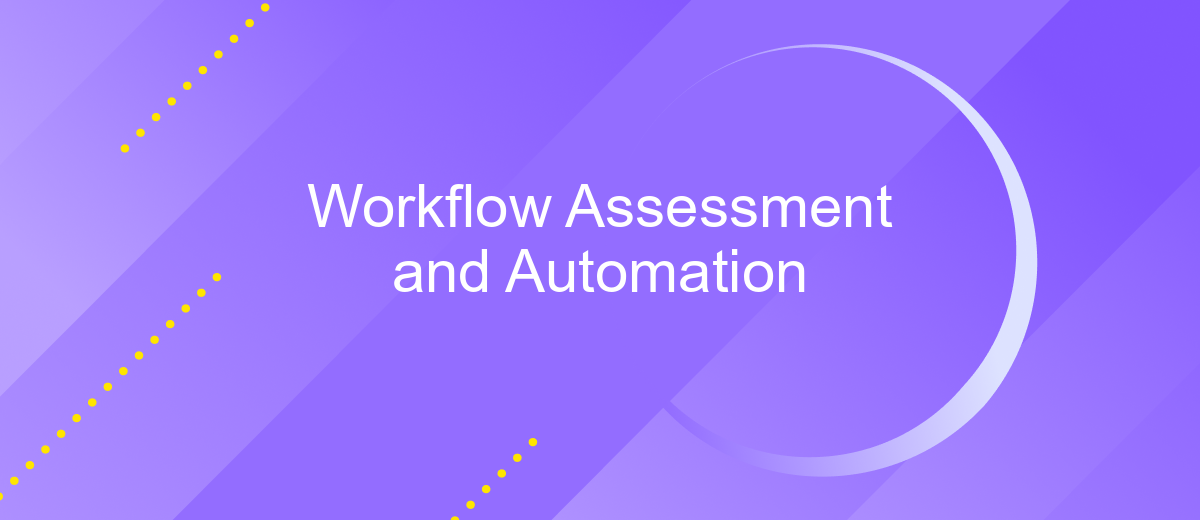Workflow Assessment and Automation
In today's fast-paced business environment, optimizing workflow efficiency is crucial for maintaining a competitive edge. Workflow assessment and automation offer powerful solutions to streamline processes, reduce errors, and enhance productivity. This article explores the key benefits of evaluating current workflows and implementing automation technologies, providing actionable insights to help organizations achieve operational excellence and drive sustainable growth.
Workflow Assessment Overview
Workflow assessment is a critical process for identifying inefficiencies and opportunities for improvement within an organization's operational procedures. By evaluating the current workflows, businesses can pinpoint bottlenecks, redundant tasks, and areas where automation can be effectively implemented to enhance productivity and reduce costs.
- Identify key processes and tasks within the workflow
- Analyze the efficiency and effectiveness of each process
- Determine areas that can benefit from automation
- Evaluate existing tools and technologies used in the workflow
- Develop a plan for implementing improvements and automation
One of the tools that can aid in the integration and automation of workflows is ApiX-Drive. This service allows businesses to seamlessly connect various applications and automate data transfer between them, thereby reducing manual work and minimizing errors. By leveraging such tools, organizations can streamline their workflows, leading to improved efficiency and better resource allocation.
Current Workflow Analysis

The current workflow involves multiple manual processes, which are time-consuming and prone to human error. Employees spend a significant amount of time on repetitive tasks such as data entry, document management, and communication between departments. This inefficiency not only slows down operations but also hampers overall productivity. Additionally, the lack of standardized procedures leads to inconsistencies in output and delays in project timelines.
To address these issues, integrating automation tools can significantly streamline the workflow. For instance, using services like ApiX-Drive can automate data transfer between different applications, reducing the need for manual input and minimizing errors. ApiX-Drive facilitates seamless integration of various platforms, enabling real-time data synchronization and improving collaboration across teams. By adopting such automation solutions, the organization can enhance efficiency, reduce operational costs, and ensure more accurate and timely completion of tasks.
Workflow Automation Considerations

When considering workflow automation, it is essential to evaluate several key factors to ensure a smooth and efficient implementation. Proper planning and understanding of these factors can significantly impact the success of your automation efforts.
- Identify repetitive tasks: Determine which tasks are repetitive and time-consuming, making them ideal candidates for automation.
- Assess current workflow: Analyze your existing workflow to identify bottlenecks and areas where automation can provide the most benefit.
- Select the right tools: Choose automation tools that align with your business needs. Services like ApiX-Drive can help streamline integrations and automate data transfers between various platforms.
- Ensure scalability: Opt for automation solutions that can grow with your business and adapt to changing requirements.
- Monitor and optimize: Continuously monitor automated workflows and make necessary adjustments to optimize performance and efficiency.
By carefully considering these factors, you can effectively implement workflow automation that enhances productivity and reduces manual effort. Leveraging tools like ApiX-Drive can further simplify the integration process and ensure seamless data flow across your systems.
Identification of Automation Opportunities

Identifying opportunities for automation within a workflow is crucial for enhancing efficiency and reducing manual efforts. The first step involves thoroughly analyzing current processes to pinpoint repetitive tasks that consume significant time and resources. By understanding these tasks, businesses can determine which ones are prime candidates for automation.
Next, it's essential to evaluate the tools and technologies available to facilitate automation. For instance, integrating systems using platforms like ApiX-Drive can streamline data transfer and synchronization between various applications, eliminating the need for manual data entry. This not only saves time but also minimizes the risk of errors.
- Identify repetitive tasks that can be automated.
- Evaluate the potential impact of automation on efficiency and accuracy.
- Consider tools like ApiX-Drive for seamless integration and data management.
- Implement and monitor automated processes to ensure optimal performance.
Once automation opportunities are identified and the appropriate tools are selected, it's important to implement these solutions methodically. Continuous monitoring and assessment will ensure that the automated processes are delivering the desired outcomes, allowing for adjustments and improvements as needed.
Implementation and Monitoring
Implementing workflow automation begins with a thorough assessment of existing processes to identify bottlenecks and areas for improvement. Once the assessment is complete, the next step involves selecting the right tools and technologies to automate these processes. For instance, ApiX-Drive can be an excellent choice for integrating various services and automating data transfers between them. This platform allows for seamless connections between different applications, ensuring that data flows smoothly and tasks are executed without manual intervention. Proper configuration and testing are crucial to ensure that the automated workflows function as intended and deliver the expected efficiencies.
Monitoring the automated workflows is equally important to ensure ongoing effectiveness and to identify any issues that may arise. Regular audits and performance reviews should be conducted to measure the impact of automation on productivity and to make necessary adjustments. ApiX-Drive provides real-time monitoring tools that help track data flows and pinpoint any discrepancies. By leveraging these monitoring capabilities, organizations can maintain optimal performance and quickly address any disruptions. Continuous improvement should be a key focus, with feedback loops established to refine and enhance the automated workflows over time.
FAQ
What is Workflow Assessment and why is it important?
How can automation benefit my business?
What types of workflows can be automated?
How do I get started with workflow automation?
What should I consider when choosing an automation tool?
Time is the most valuable resource in today's business realities. By eliminating the routine from work processes, you will get more opportunities to implement the most daring plans and ideas. Choose – you can continue to waste time, money and nerves on inefficient solutions, or you can use ApiX-Drive, automating work processes and achieving results with minimal investment of money, effort and human resources.

